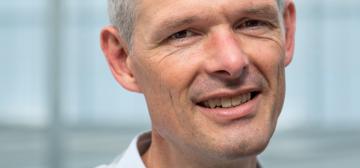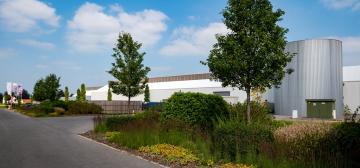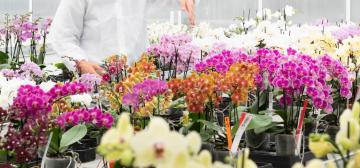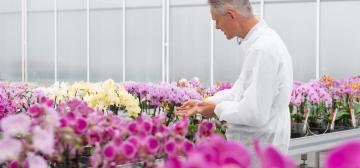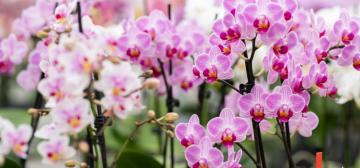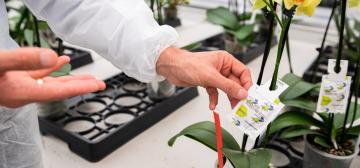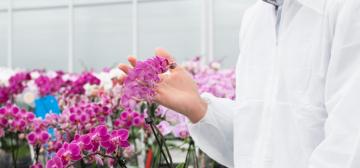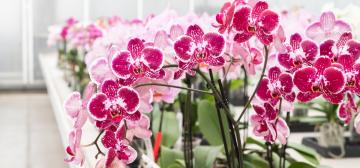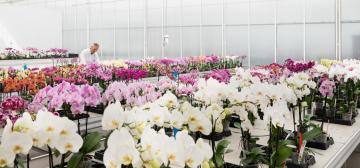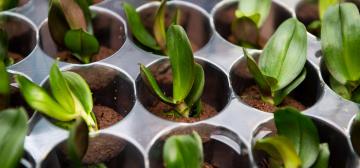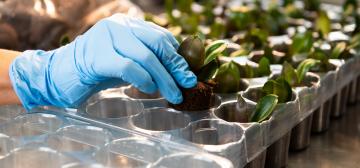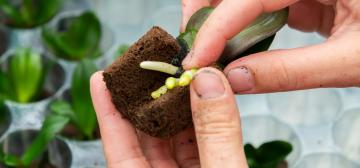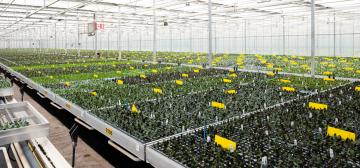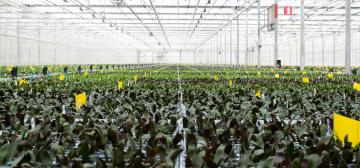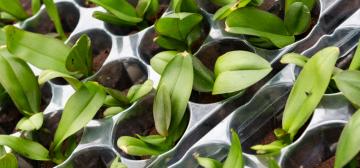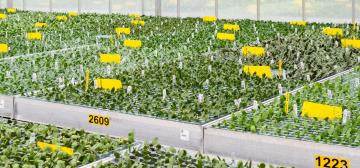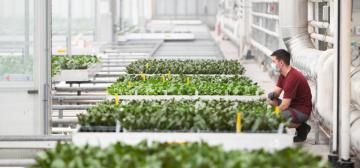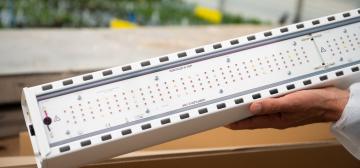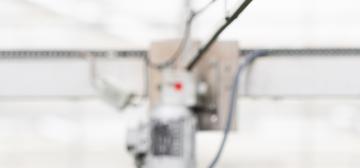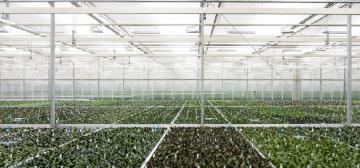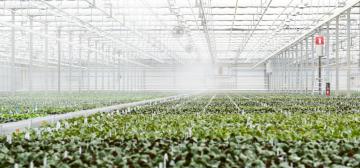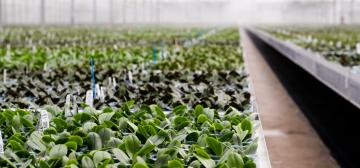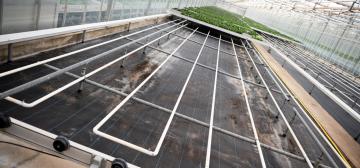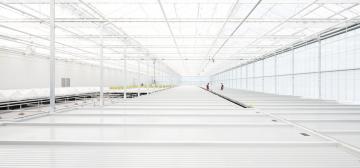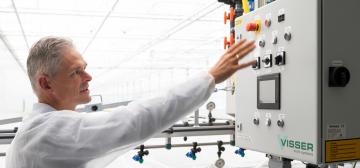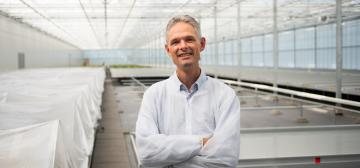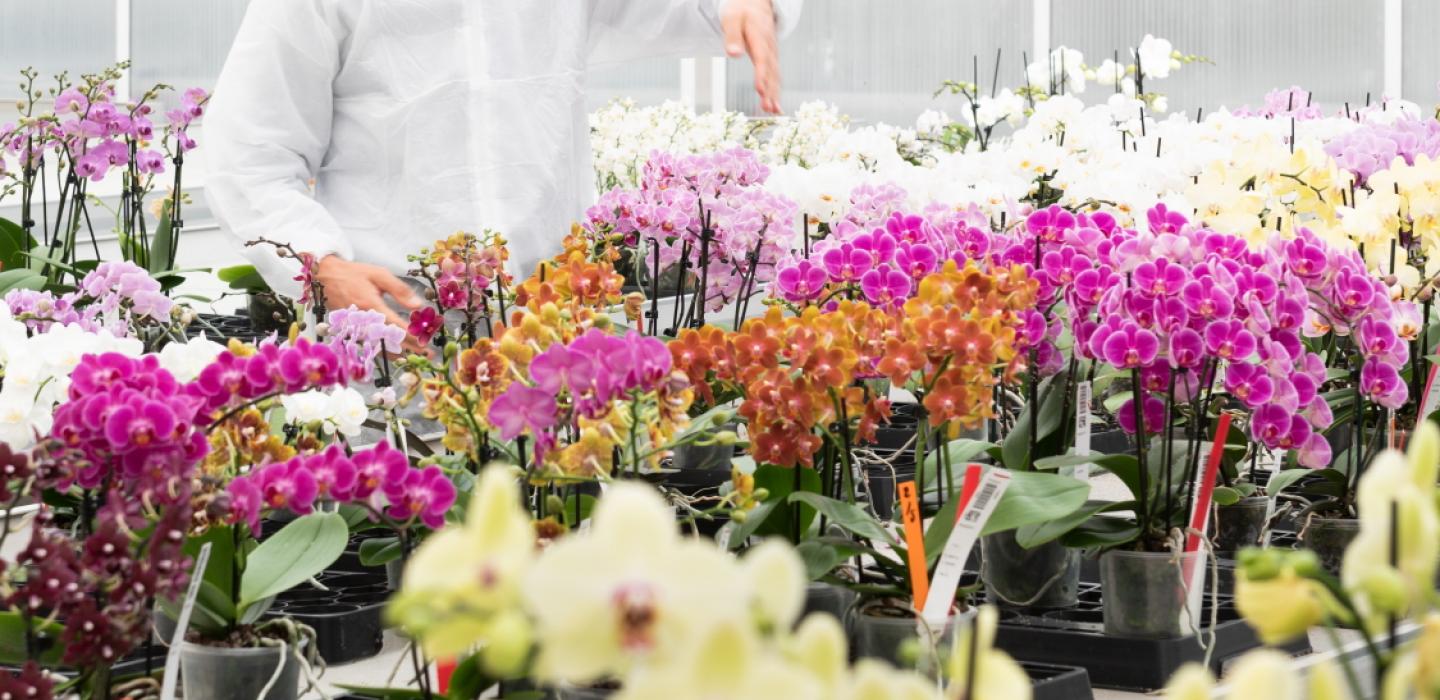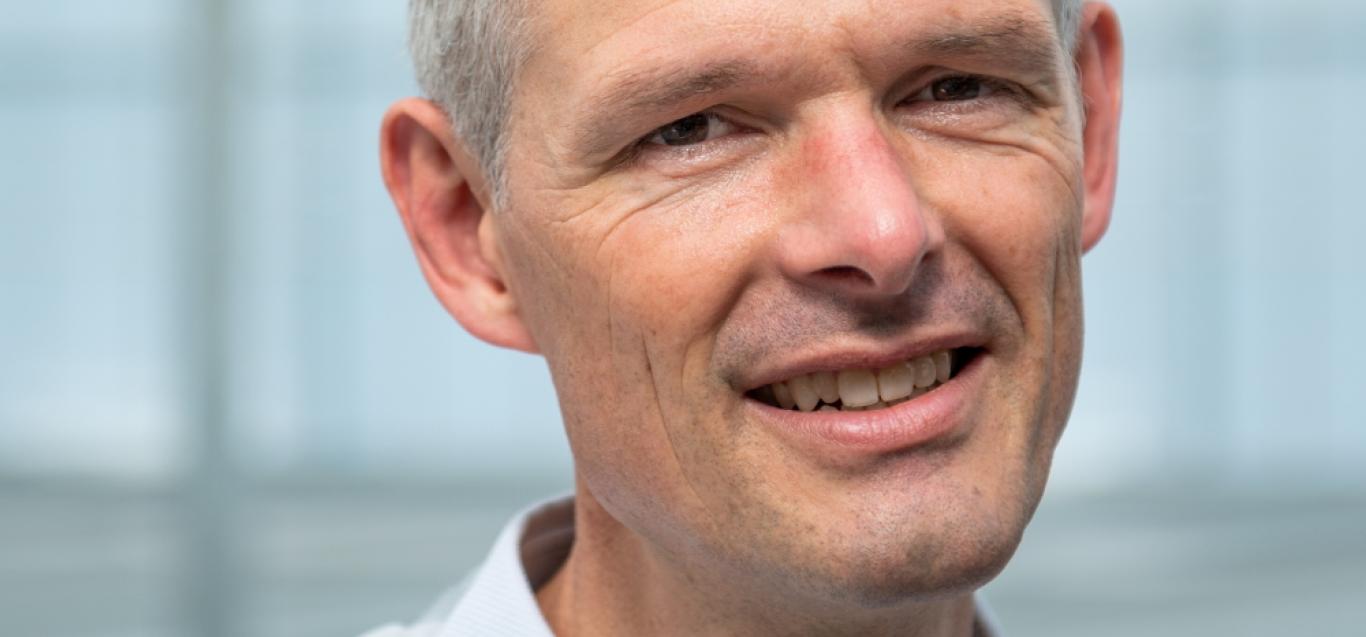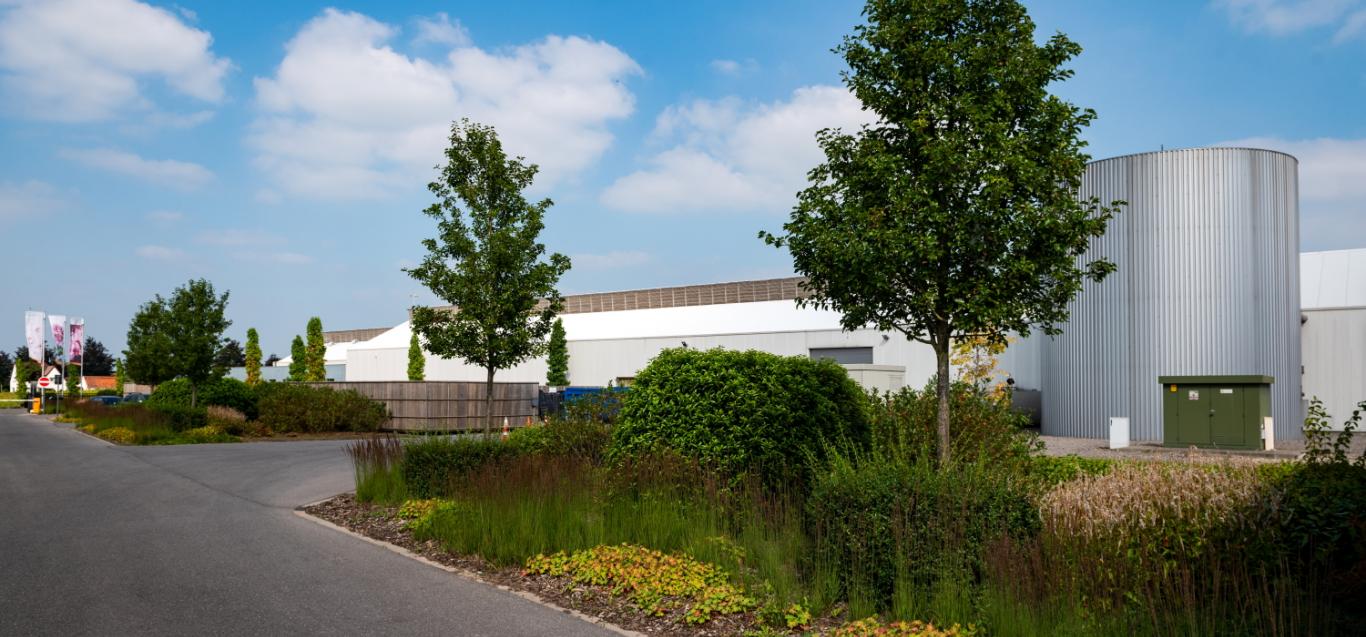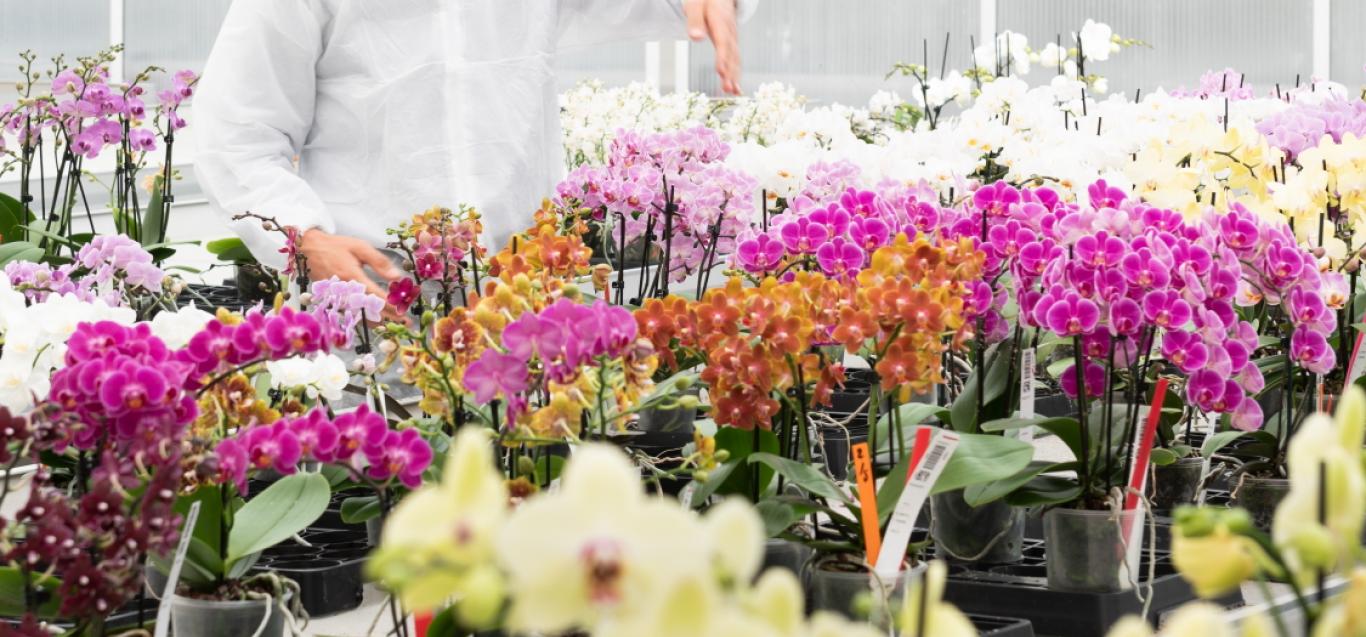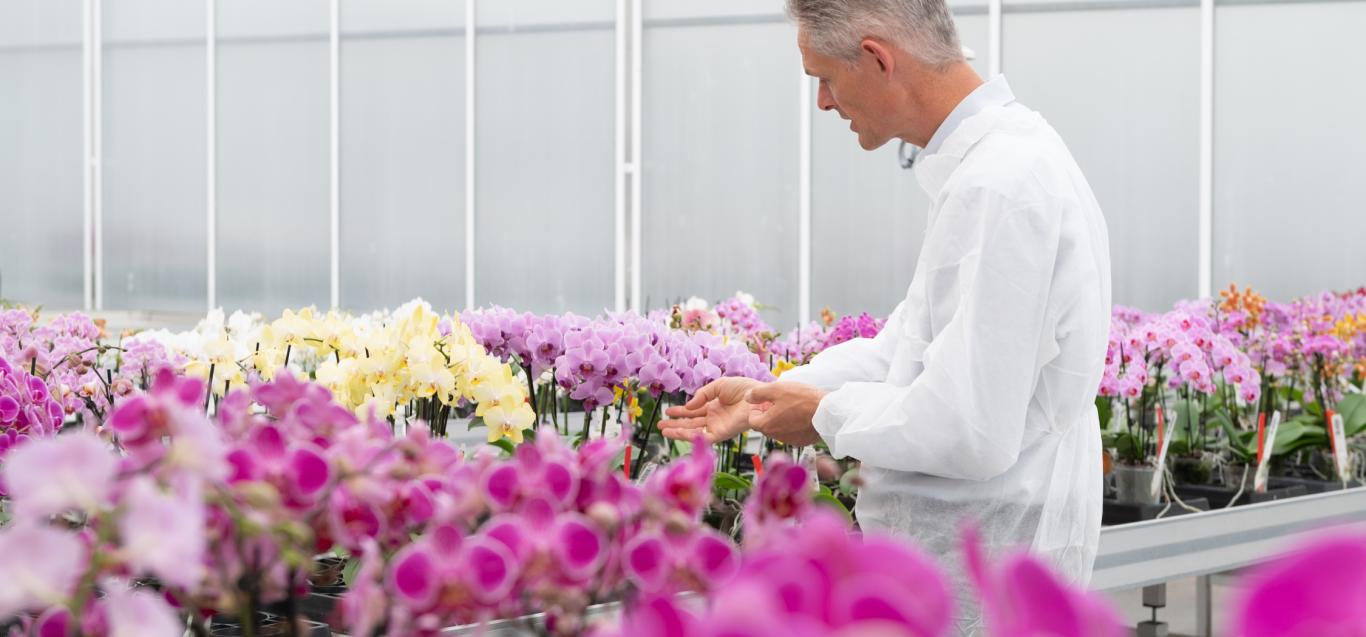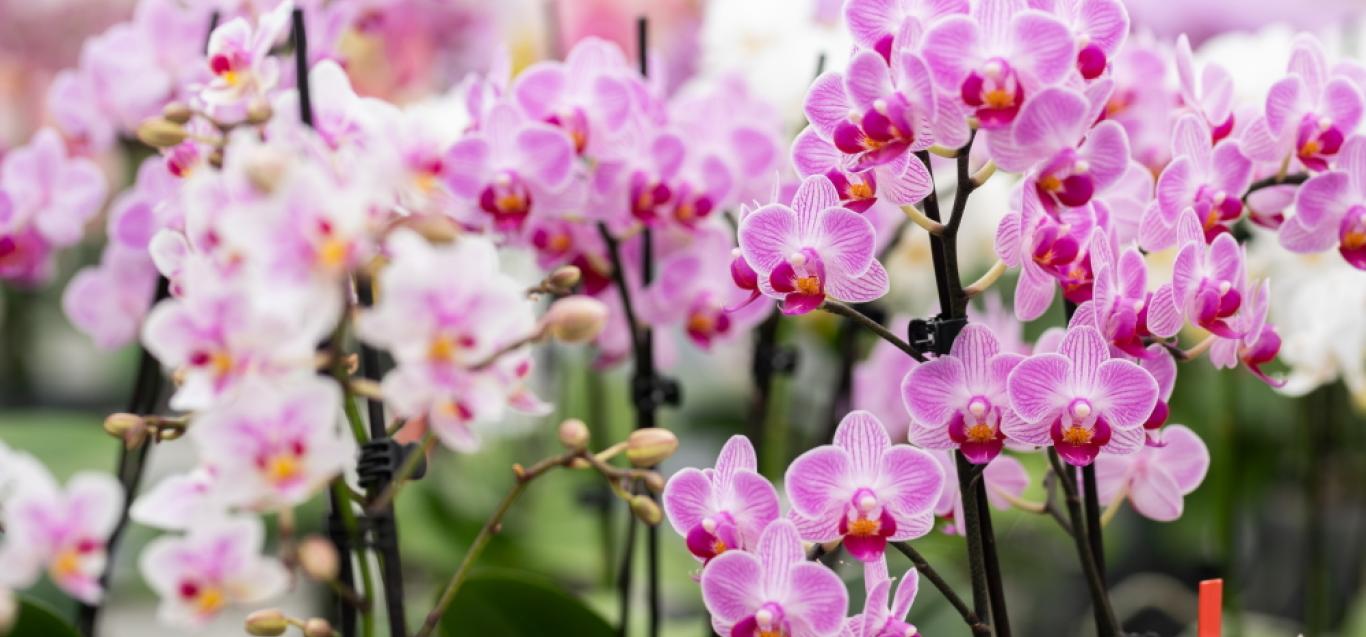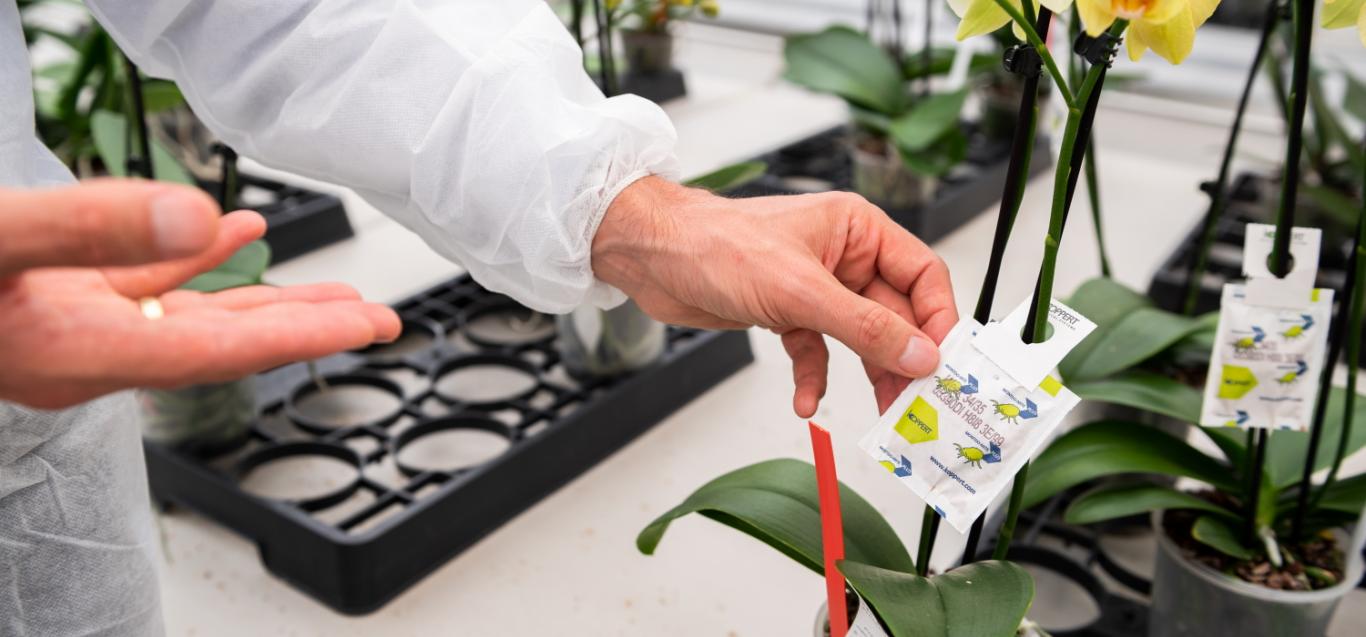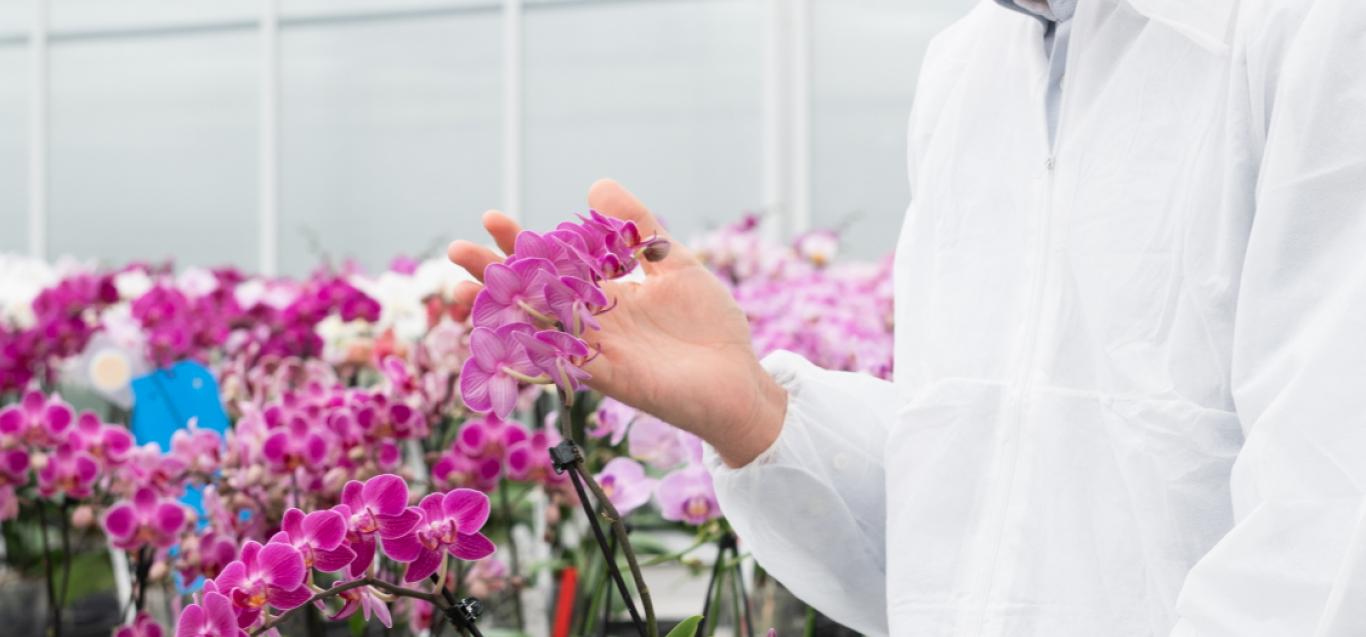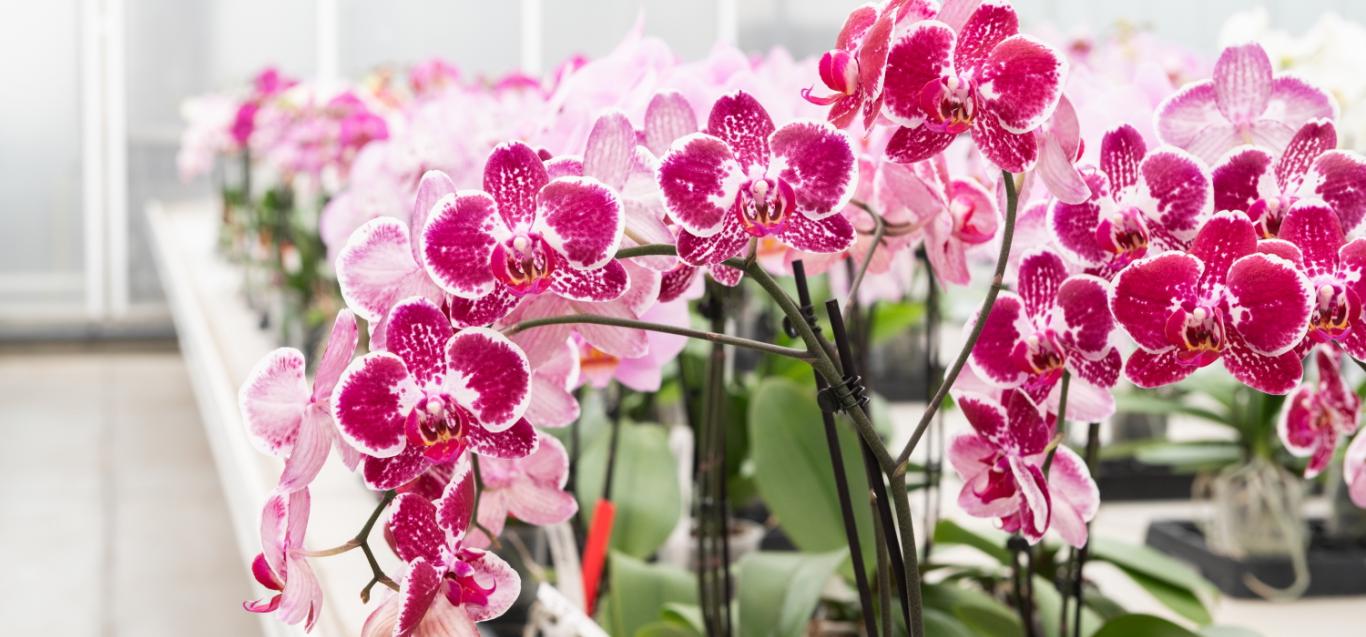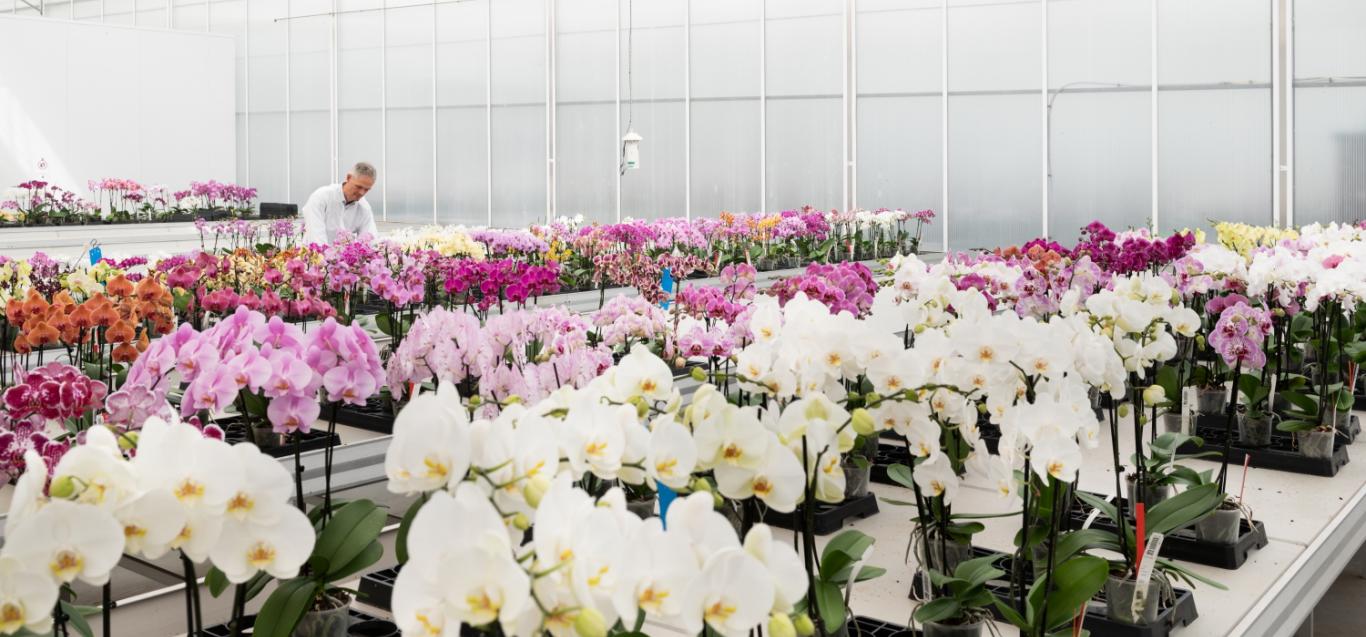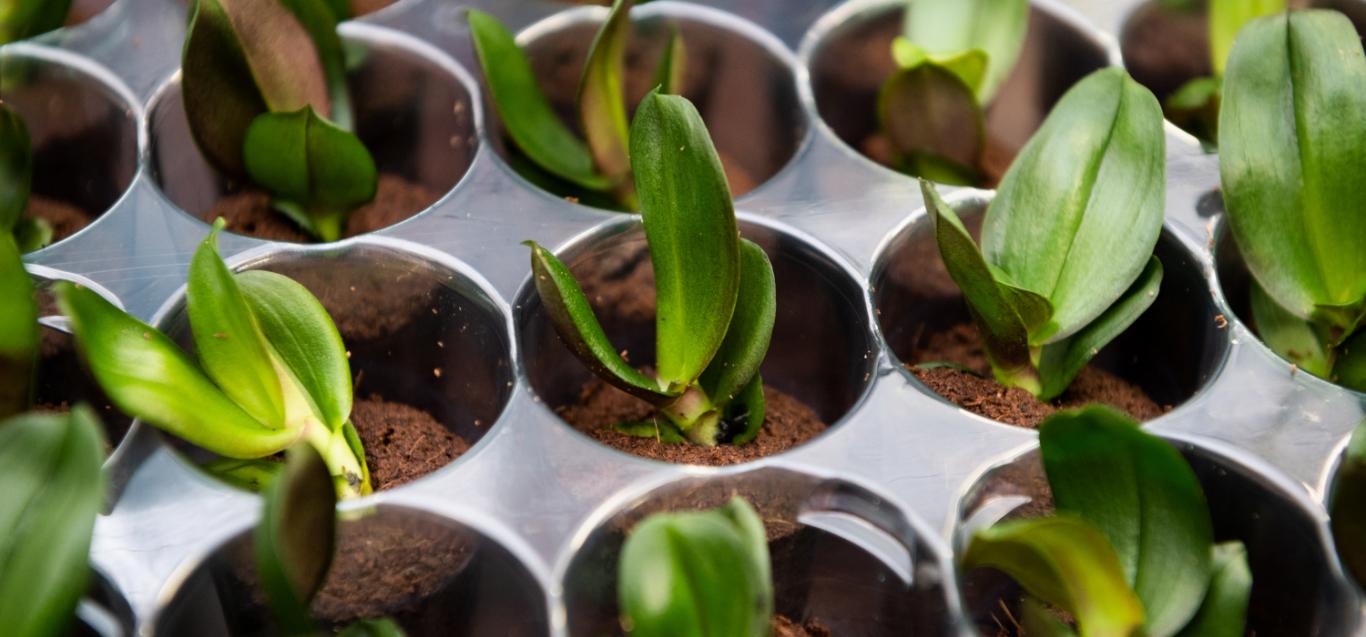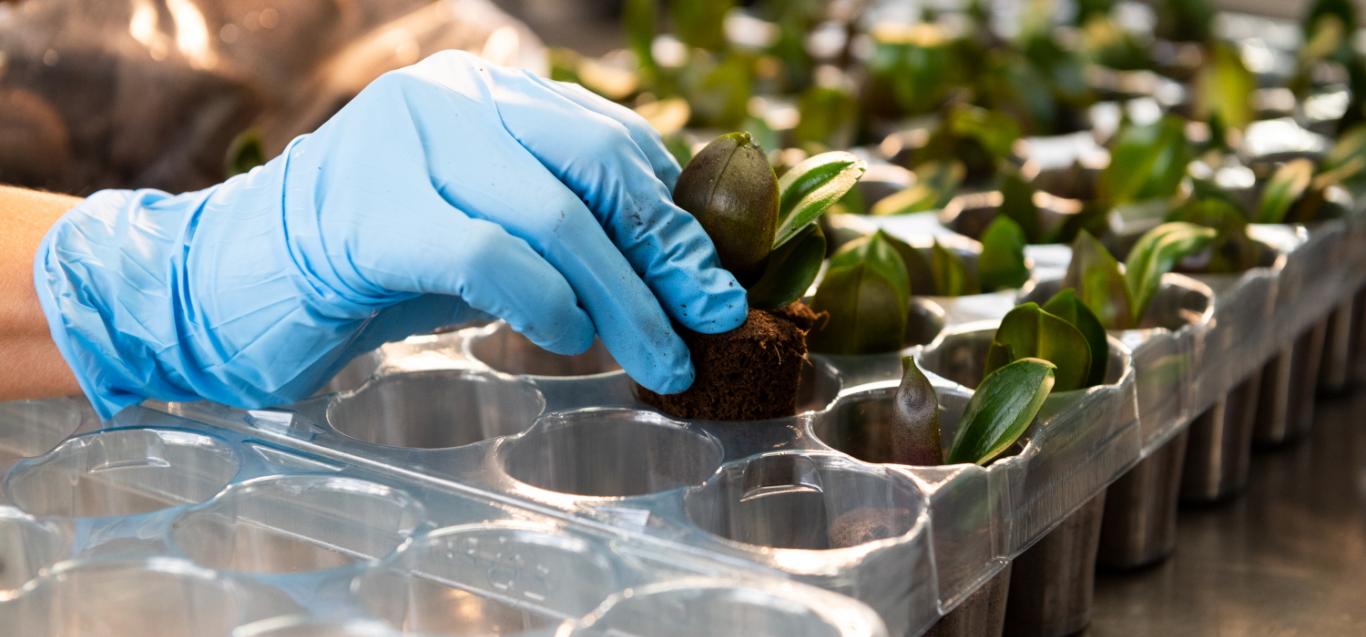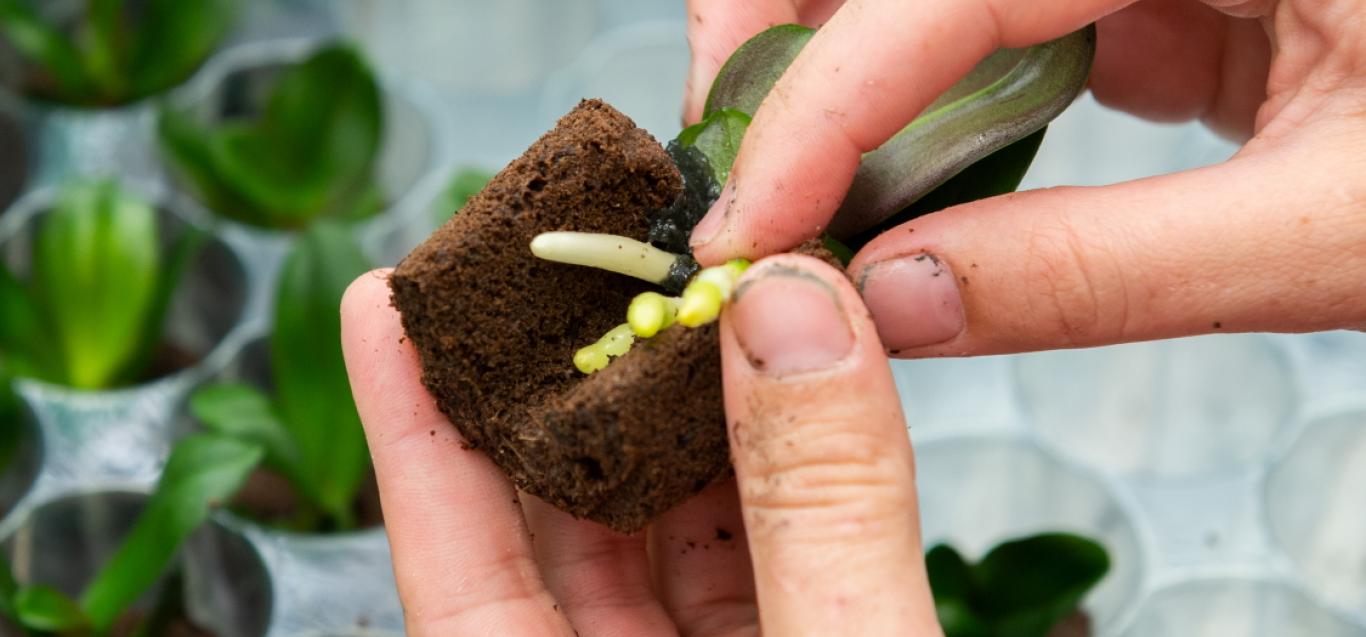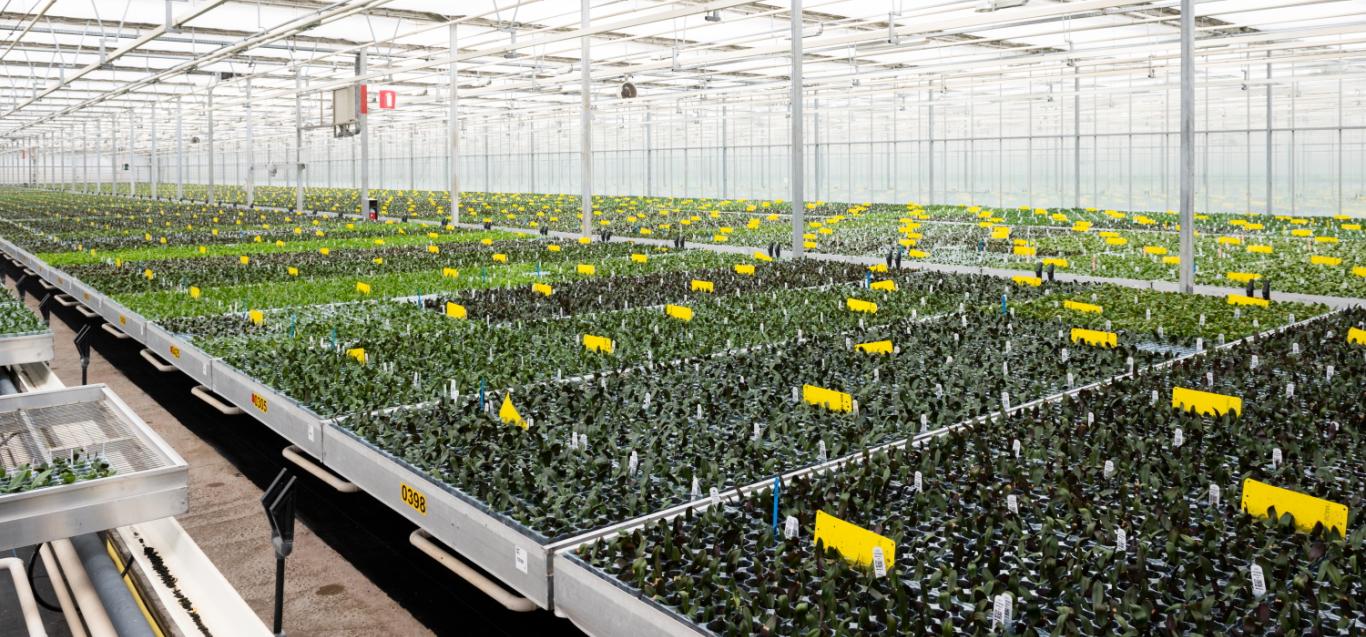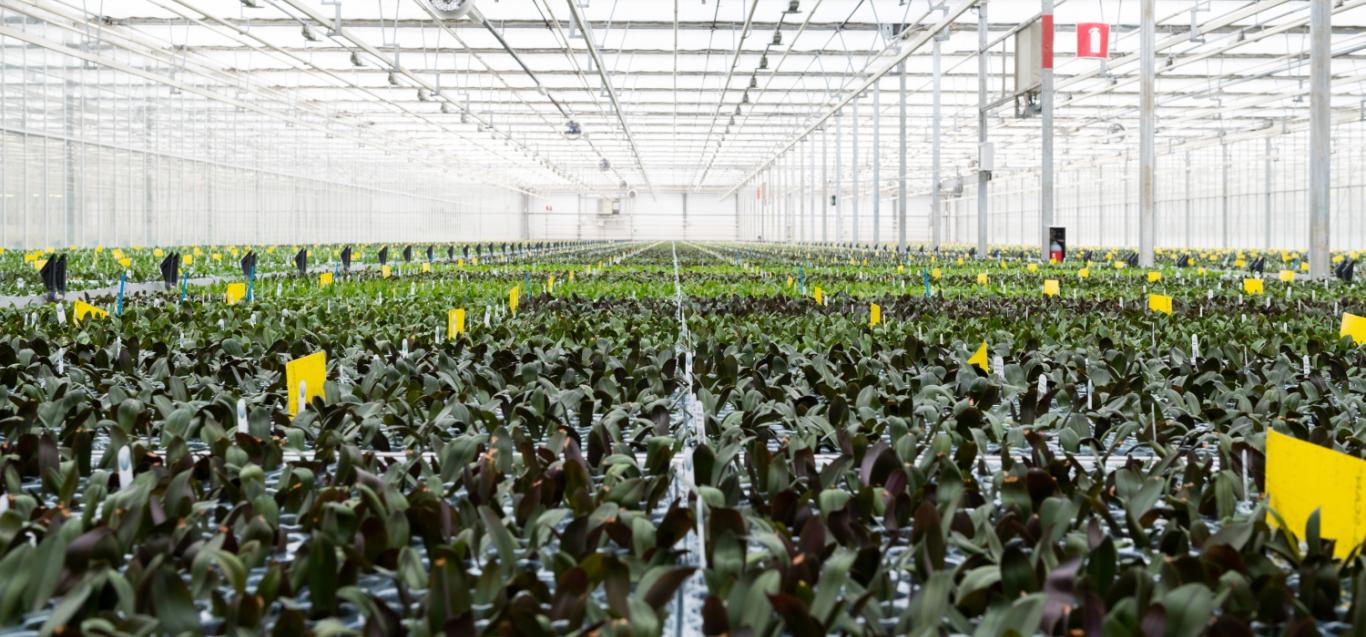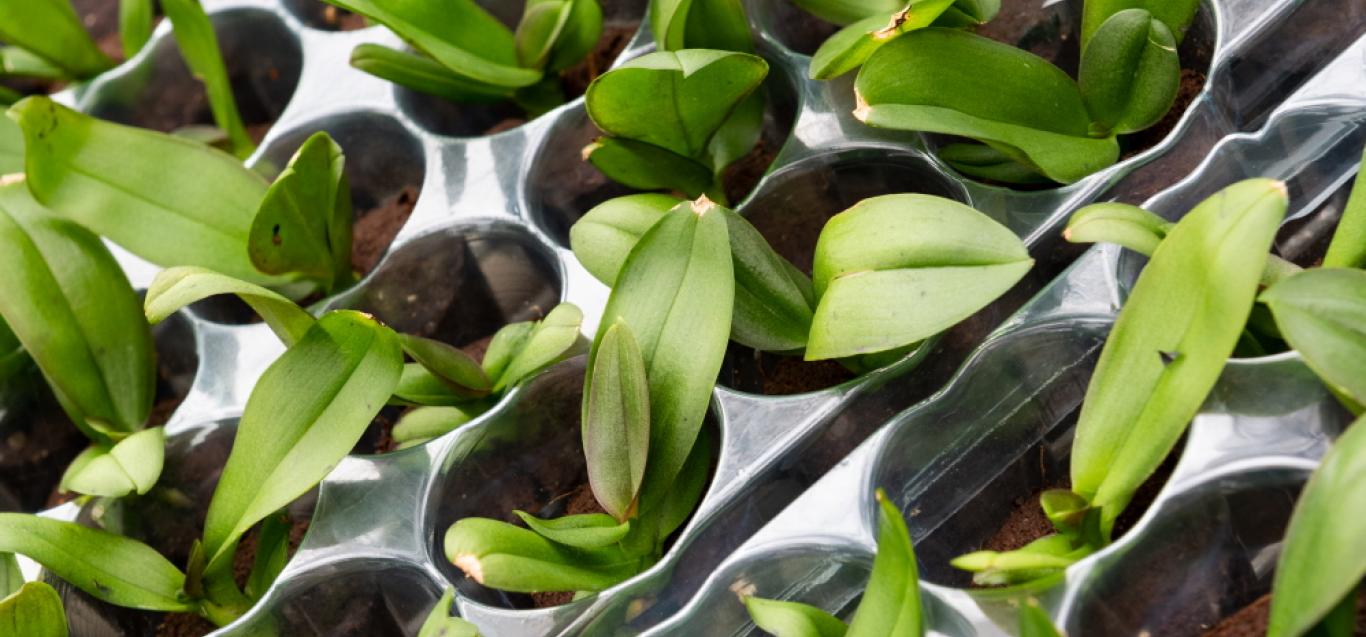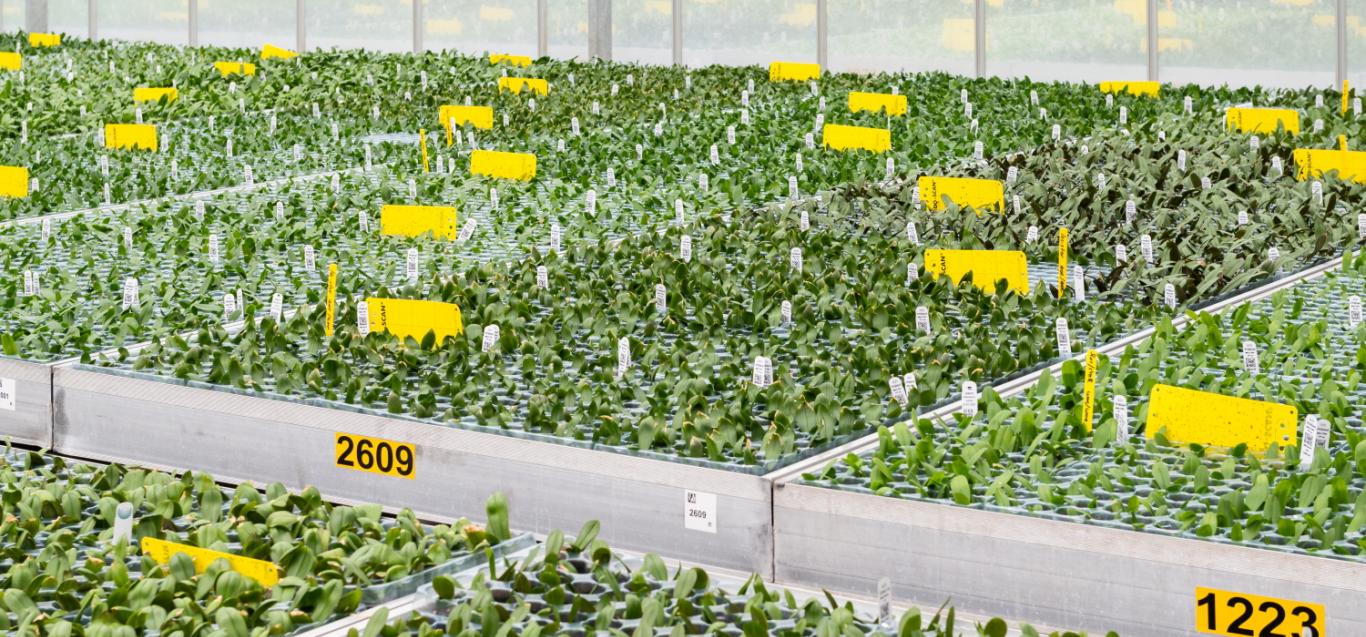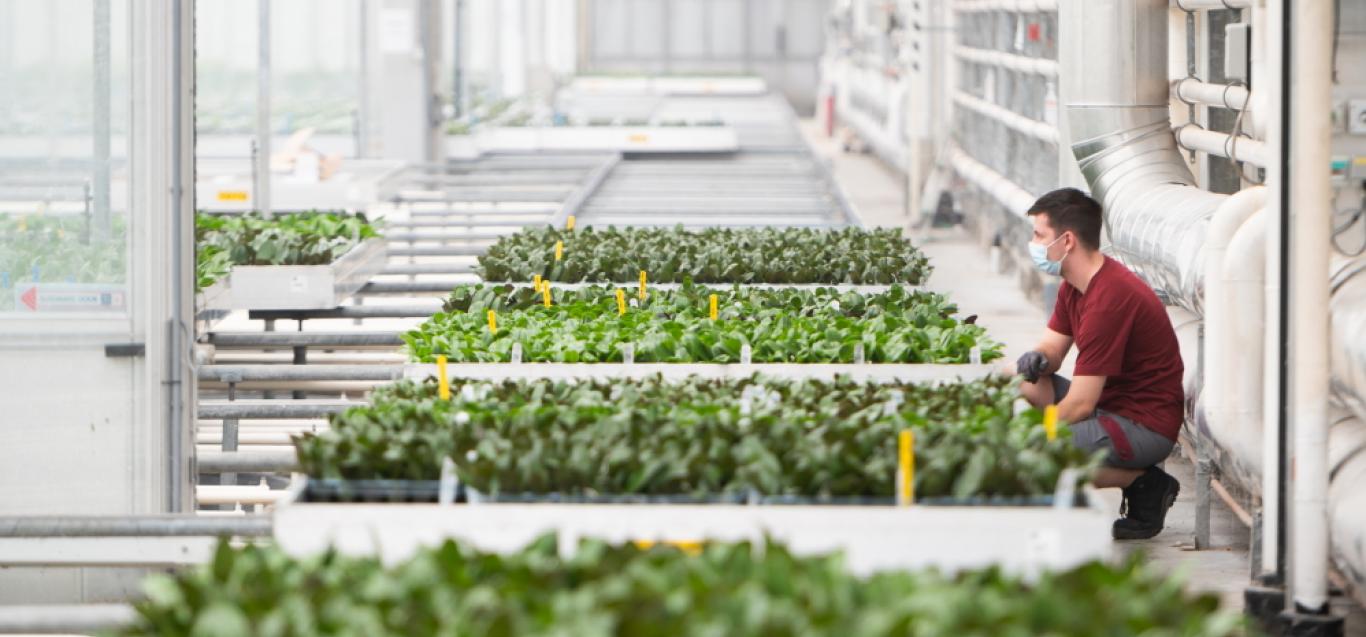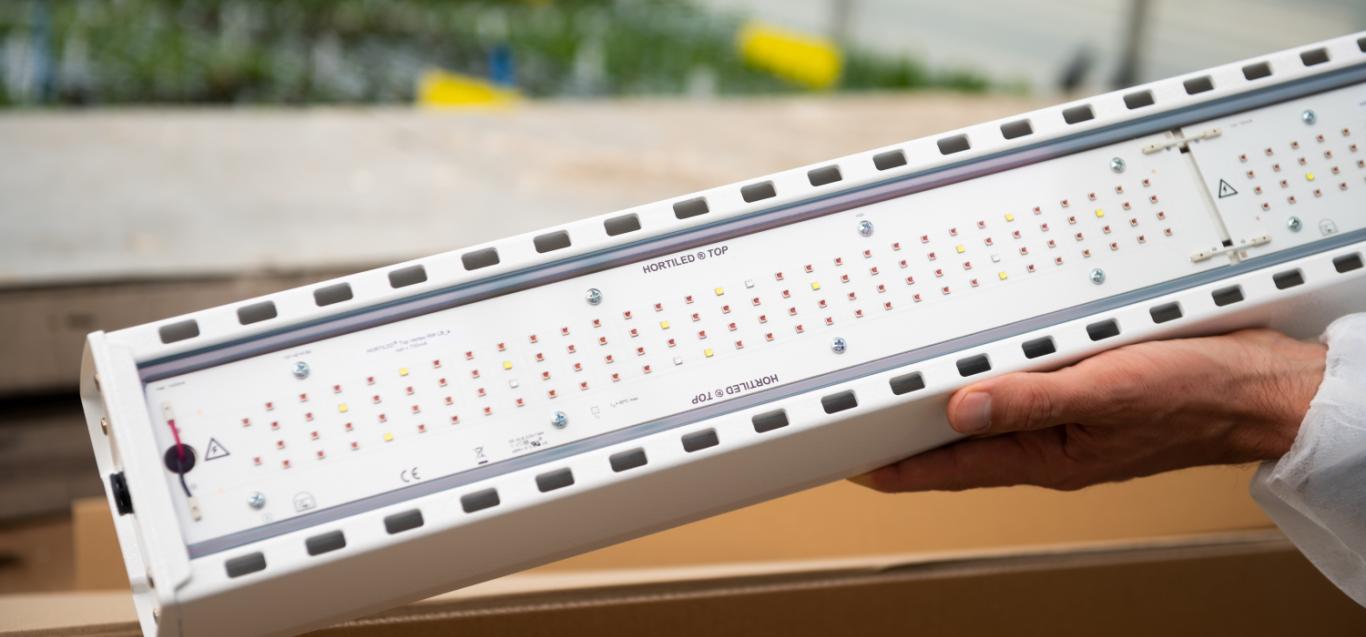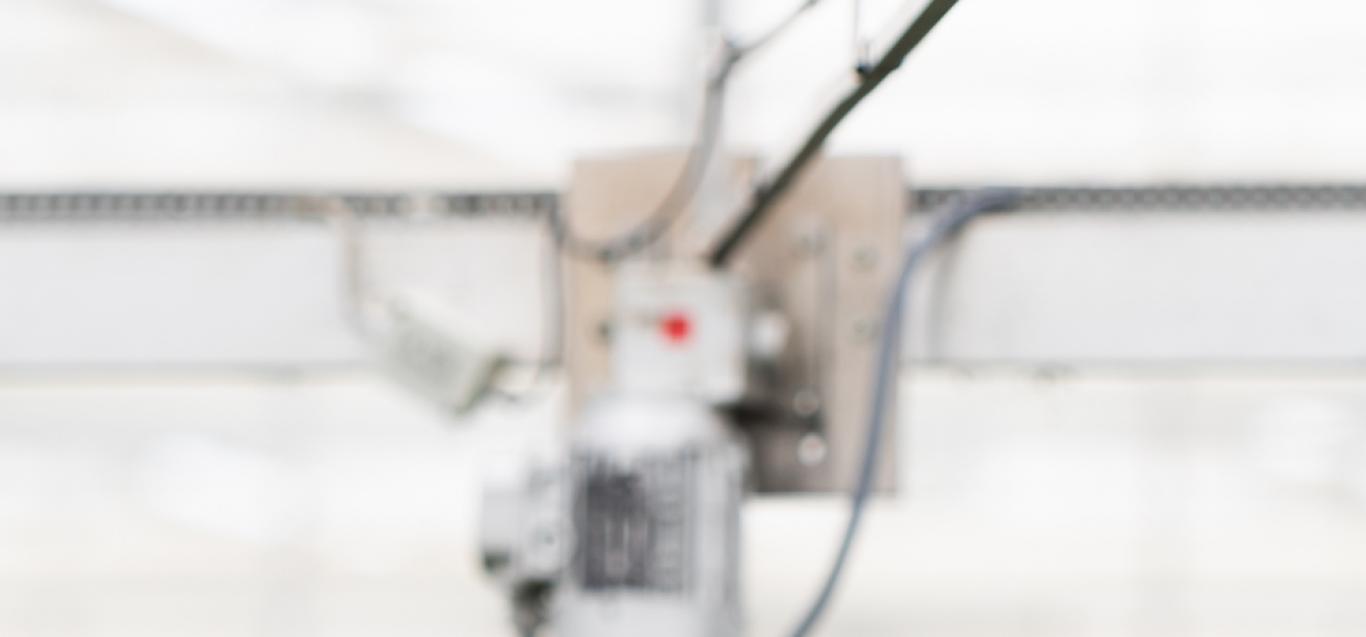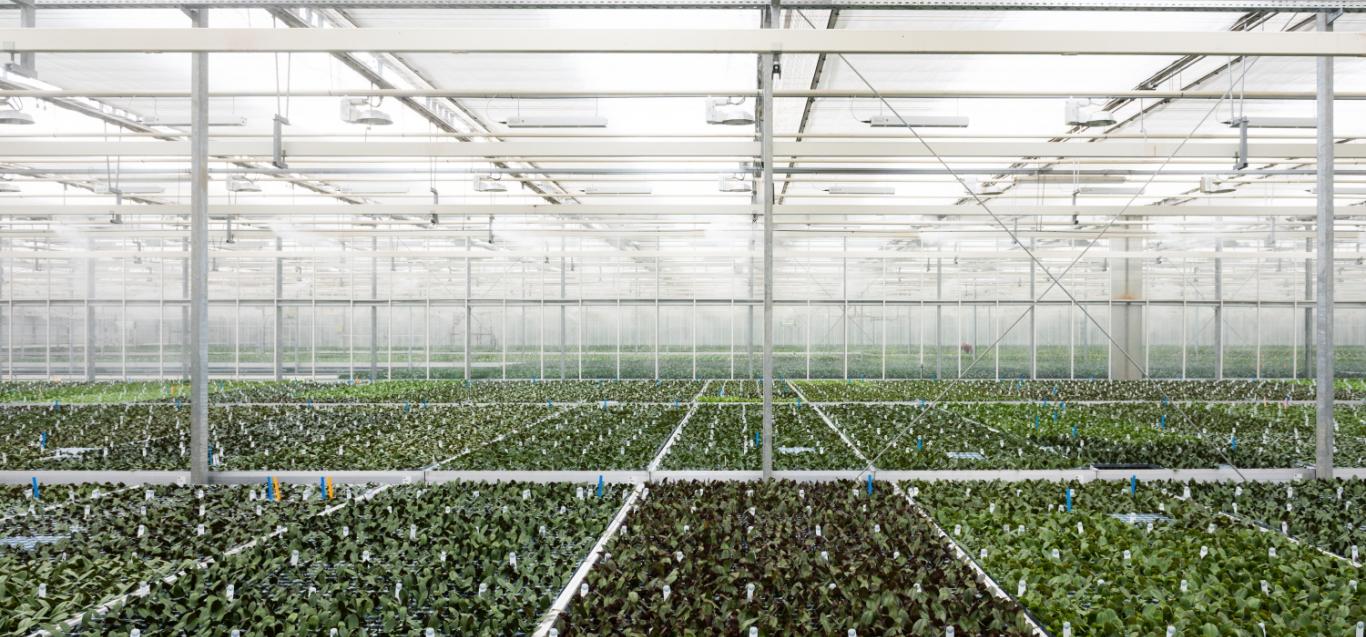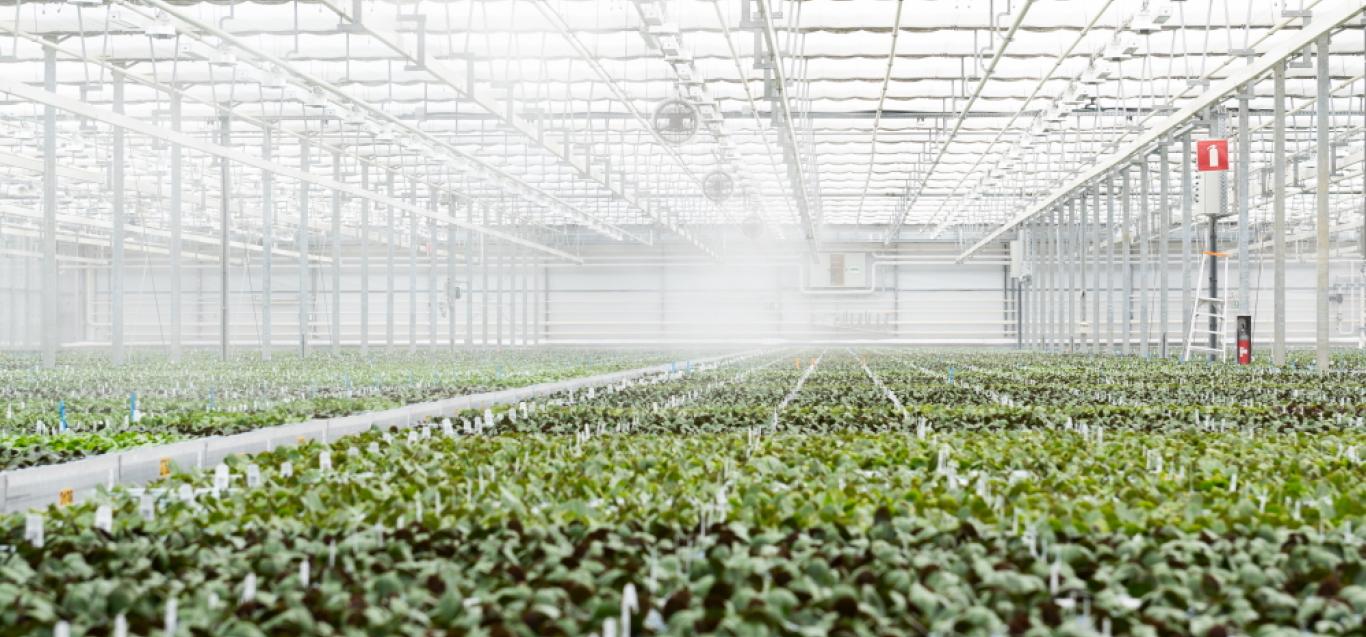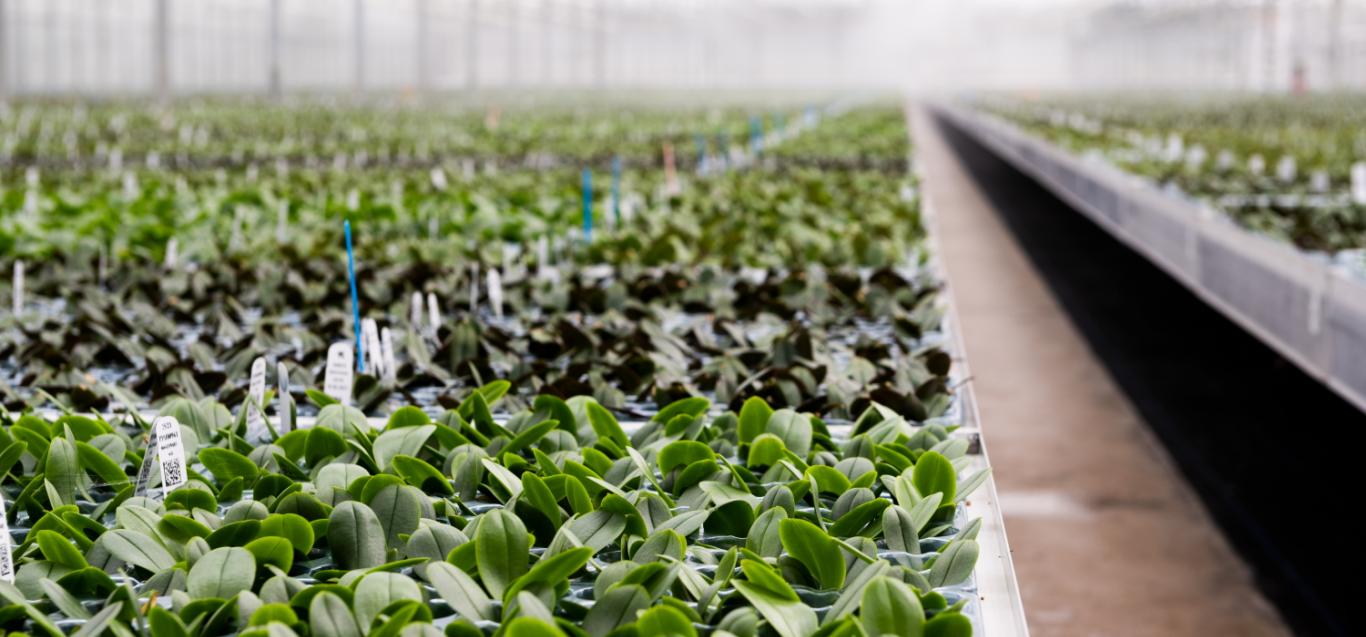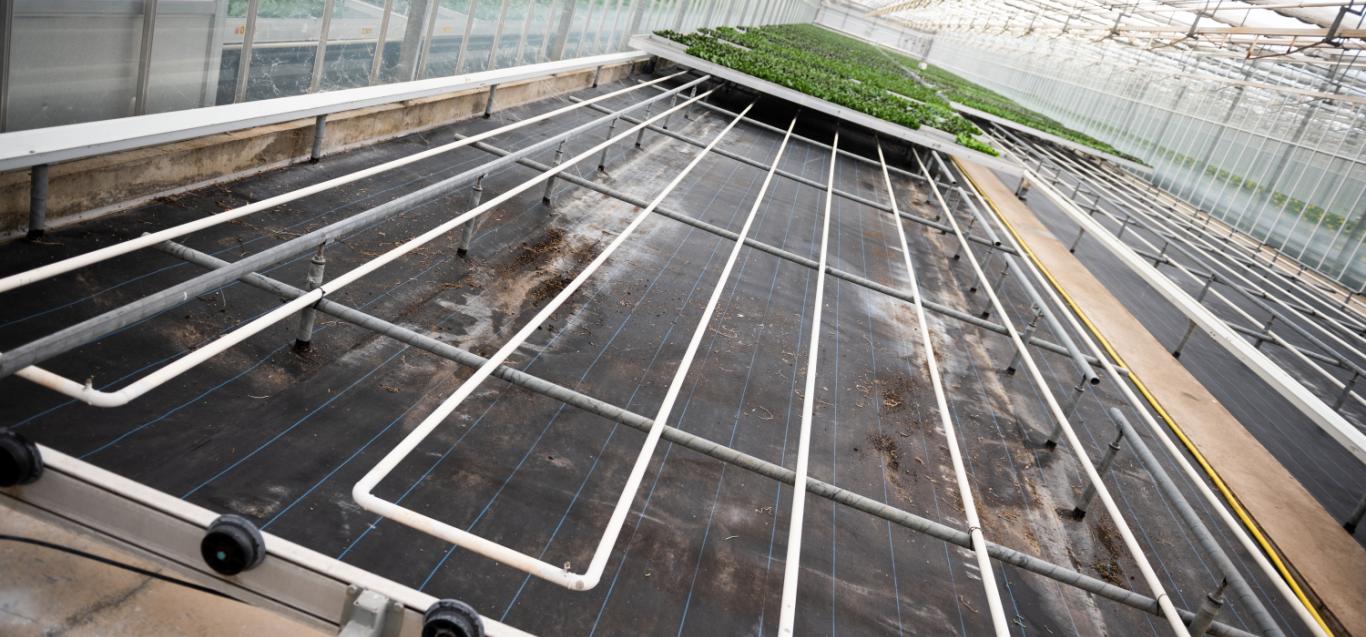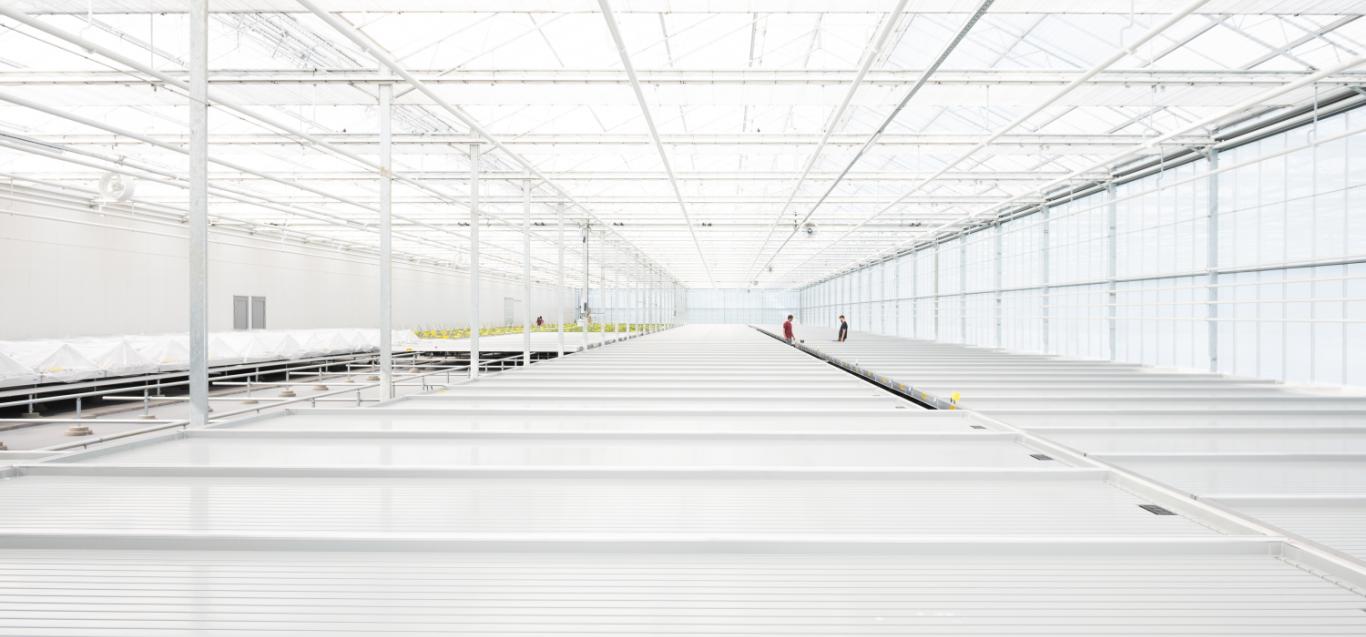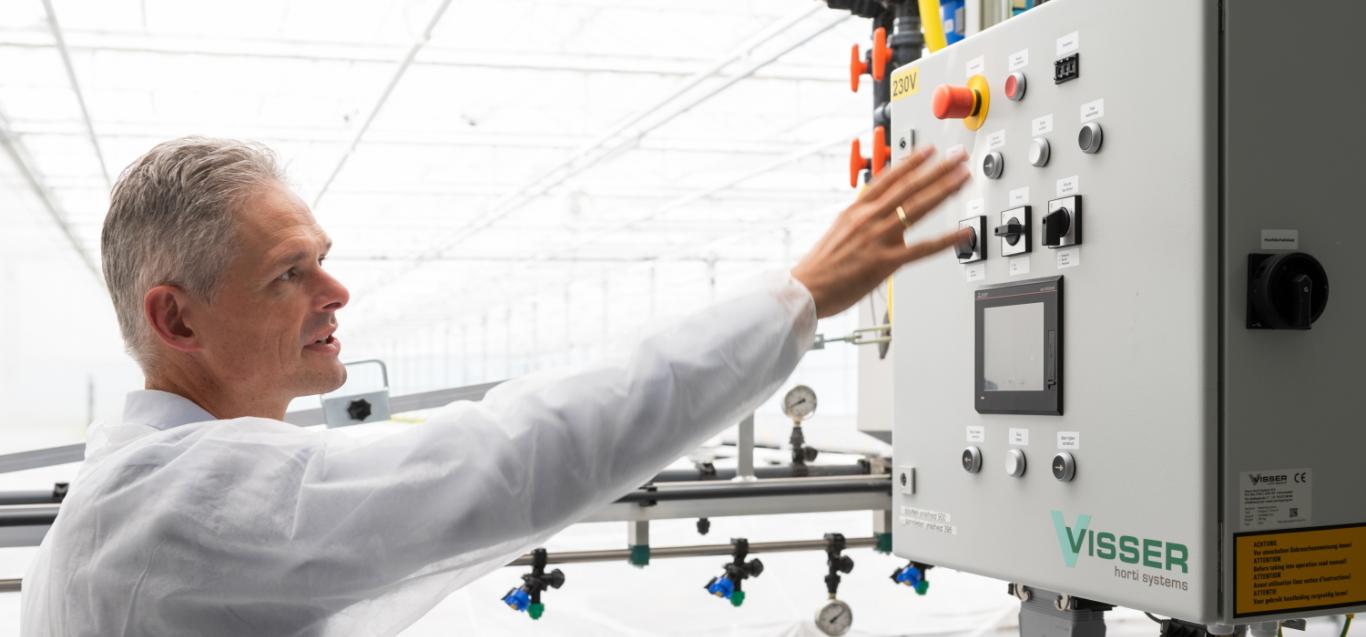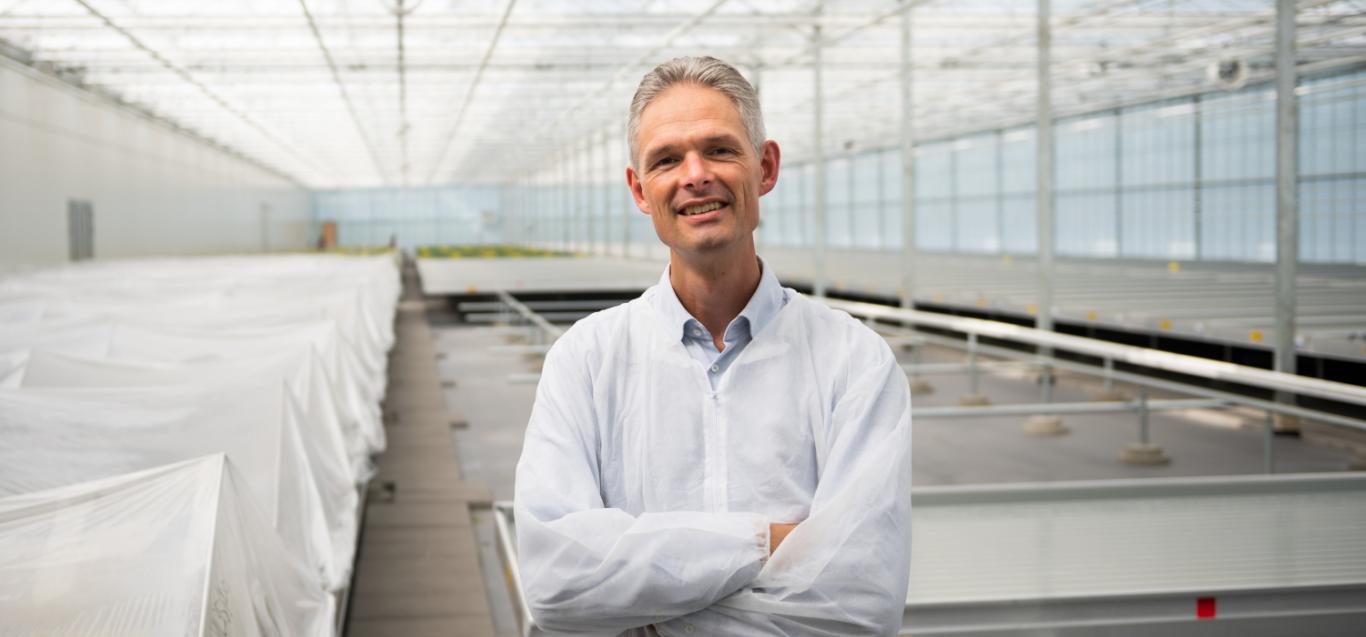Looking beyond the classic cost-recovery time
“Sustainability is in our blood.” The slogan may be over-used, but coming from a Phalaenopsis breeder it sounds just a little more credible. Just like its fellow competitors, Microflor in Lochristi was faced with the general price pressure for this crop, but it did not let that affect its ambitions with regard to sustainability. “The direct return from the market for quite a number of efforts might be zero, but we’re convinced that sustainable enterprise is becoming a prerequisite for survival.”
Microflor is an established name in the world of Phalaenopsis. The company is one of the top three distributors of Phalaenopsis in Europe. Every year, the company propagates between 25 and 30 million plants in its lab. In total it employs between 250 and 300 people. It has two sites in Lochristi near to Ghent and a site in Slovakia. For that propagation it makes use of its own breeding. The company also acclimatises the young plants propagated in vitro into plugs. In addition to Phalaenopsis, Microflor is also active on a slightly more modest scale in Gloxinia and Helleborus. The production of Helleborus is evolving towards 1 million young plants with a promising growth rate in double figures.
Off to the client earlier
The time that propagators of Phalaenopsis could present such growth rates is over. The sector floundered through a number of difficult years. “2017 was the tipping point, where supply exceeded demand and prices dropped sharply,” says Ivy Lefevere, COO at Microflor. Microflor survived the difficult period and even attracted external investors to help achieve its growth ambitions. However, the market has changed. “Whereas in the past we above all saw growth in young plants – the plants spent the first growing phase in our greenhouse – we now see sharp growth in the in-vitro shoots; the first growing phase occurs at the clients.”
Breeding with other care in mind
Another trend is that the sales channel through which orchids reach the consumer is changing. The expectation is, that by 2027 two thirds of the plants will reach consumers by channels other than the retail trade: via the garden centre, the department store or online. A few years ago, this was only one third. “Plants don’t get the same care via the non-specialised channels, so we have to take that into account in our breeding.”
How robust are plants; how long do plants stay in good condition? These are questions where the economy and sustainability clearly mutually reinforce each other. “Phalaenopsis’ success can partly be explained by its very long flowering period. From the moment the first flowers open, there is a flowering period of up to ten weeks. However, if the plant does not receive optimum care, this can have a negative impact. So we selectively breed against stress factors such as temperature, dropping buds, light, cold shock, etc. We’ve definitely not yet reached the end of the road in that area,” feels Ivy Lefevere.
Hygiene is the main guide
No one wants to lose plants as a result of disease or pests, certainly not at the nursery. Social actors want as little chemicals as possible used for crop protection. “Barring disasters, organic crop protection for young plants is coming along quite nicely. The use of nonpathogen fungi and switching to the right substrate further reduce the pressure.” Lefevere strongly believes that hygiene is the main guide, in particular for water. A combination of chlorine, hydrogen peroxide and UV light keeps the water clean. There is not one perfect solution, each has its pros and cons. Chlorine builds up, hydrogen peroxide requires silver to remain stable and UV light has no aftereffect at all. “By combining them, we are able to the keep the water quality very high. Which is necessary since cultivation creates the ideal conditions for pathogens. That’s why we’re so strict; because we actually strive for the same water quality as the food and pharma industries.”
Firm belief in recycling
In the acclimatising greenhouses there are a large number of plants, all close together on tables. So not a lot of water is lost. However, three years ago Microflor still decided to catch all the water that drips through the tables. “It’s no easy matter to carry out that kind of work afterwards. But we wanted to close the loop and not to have to depend at all on any other sources than rainwater. In this way we recover part of the rainwater and nutrients, even if we can’t recover our investments like that. We do it because we firmly believe in it.”
Trias energetica
And the company is serious about that belief. In 2016 it set out a vision of sustainability and set up a working group. The aim was to work towards climate neutrality. Energy consumption is an important element in this. The leitmotif is formed by the so-called ‘Trias Energetica’, which consists of three steps: limit energy consumption, use renewable energy and if fossil fuels are used, use them as efficiently as possible.
In concrete terms, this amongst other things led to Microflor strongly investing in LED lighting. In the climate chambers for the young in-vitro plants, they replaced the fluorescent lighting. “This was preceded by research. We had the lamps custom made. Even with the exact same colour as the fluorescent lighting, the spectrum was still different.” In the greenhouses, the ideal mix of LEDs and SON-T was sought. The shift is almost complete there. And there, too, research was required to determine the right light composition for the cultivation.
At the company, as far as possible, electricity is the power source used. All the electricity purchased is green power. There are electric charging stations, both for bicycles and for company cars. The heating uses cogeneration powered by natural gas. “We need fossil fuels to heat the greenhouses. There is no realistic alternative for this yet. But cogeneration is already a step forward compared to classic heating installations.”
Complex energy issues
There are often dilemmas: a SON-T lamp also gives off heat; how best to generate that heat if you opt for LEDs? ‘Yes’ to electric vehicles. But what about long distances? And lower heat, means slower growth. Don’t we then need more surface area to achieve the same production? “Energy issues are often complex, but in Twitter discussions are reduced to one-liners. Reality is more subtle,” argues Ivy Lefevere. Furthermore, the market is not really inclined to pay more for sustainable choices, even if certificates like MPS-GAP do seem to be becoming the norm. “We take sustainability initiatives, primarily because we’re convinced of the necessity. If that makes us a more attractive party for market players or employees, all the better.”
Give us the means
He pleads for the same nuance in the debate on production regulations. The market for Phalaenopsis is a global market. The market may be globalised, the rules that apply on the production side are not at all. “Even within our unified Europe there are major differences. For example, we’re not allowed to use a biological preparation against Sciara (scarid fly), but it is permitted in the neighbouring countries. Those orchids do all meet on the same markets.”
Nor are discussions about new breeding techniques equally tough everywhere. “Outside Europe, certain techniques are permitted that are not within Europe. They are wonderful techniques, but we are not allowed to use them. If we are to face every challenge, such as plants with a longer life, that are less susceptible to disease and are sturdier, then you have to give us the means to tackle them head-on.”
Microflor in figures
Employees
- 1 manager
- 55 permanent employees
- 250 contractual workers
- +/- 40 occasional workers
Company surface area: 5 ha
Export: 98% of the turnover
- The Netherlands: 89%
- United States: 2%
- Denmark: 2%
- Poland: 1%
- Germany: 1%
- Italy: 1%
- Great-Britain: 1%
Most important export products: Phalaenopsis, Gloxinia en Helleborus
